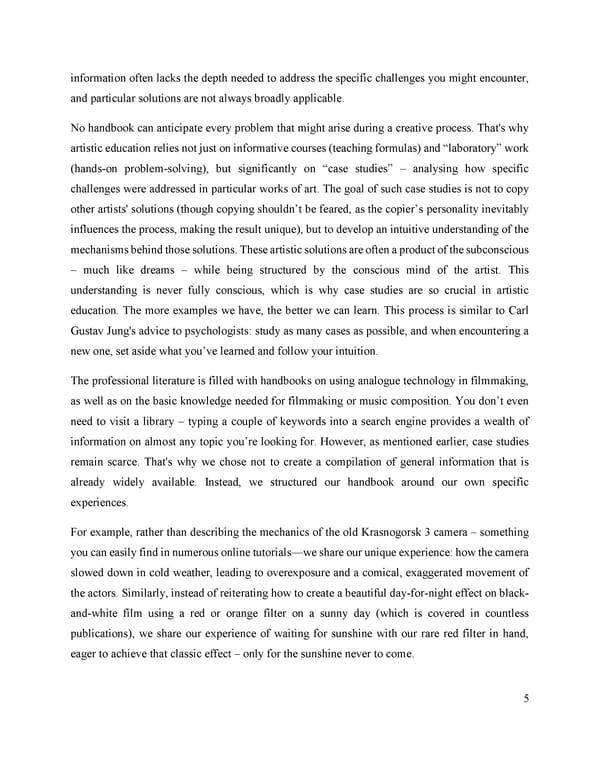information often lacks the depth needed to address the specific challenges you might encounter, and particular solutions are not always broadly applicable. No handbook can anticipate every problem that might arise during a creative process. That's why artistic education relies not just on informative courses (teaching formulas) and “laboratory” work (hands-on problem-solving), but significantly on “case studies” – analysing how specific challenges were addressed in particular works of art. The goal of such case studies is not to copy other artists' solutions (though copying shouldn’t be feared, as the copier’s personality inevitably influences the process, making the result unique), but to develop an intuitive understanding of the mechanisms behind those solutions. These artistic solutions are often a product of the subconscious – much like dreams – while being structured by the conscious mind of the artist. This understanding is never fully conscious, which is why case studies are so crucial in artistic education. The more examples we have, the better we can learn. This process is similar to Carl Gustav Jung's advice to psychologists: study as many cases as possible, and when encountering a new one, set aside what you’ve learned and follow your intuition. The professional literature is filled with handbooks on using analogue technology in filmmaking, as well as on the basic knowledge needed for filmmaking or music composition. You don’t even need to visit a library – typing a couple of keywords into a search engine provides a wealth of information on almost any topic you’re looking for. However, as mentioned earlier, case studies remain scarce. That's why we chose not to create a compilation of general information that is already widely available. Instead, we structured our handbook around our own specific experiences. For example, rather than describing the mechanics of the old Krasnogorsk 3 camera – something you can easily find in numerous online tutorials—we share our unique experience: how the camera slowed down in cold weather, leading to overexposure and a comical, exaggerated movement of the actors. Similarly, instead of reiterating how to create a beautiful day-for-night effect on black- and-white film using a red or orange filter on a sunny day (which is covered in countless publications), we share our experience of waiting for sunshine with our rare red filter in hand, eager to achieve that classic effect – only for the sunshine never to come. 5
 Lost Analogue: Exploring Film, Music, and Interdisciplinary Methods in Education Page 5 Page 7
Lost Analogue: Exploring Film, Music, and Interdisciplinary Methods in Education Page 5 Page 7